| Autore |
 Discussione Discussione  |
|
|
Catocala
Utente Junior
 
Città: Venezia
Regione: Veneto

99 Messaggi
Tutti i Forum |
|
|
Catocala
Utente Junior
 
Città: Venezia
Regione: Veneto

99 Messaggi
Tutti i Forum |
 Inserito il - 09 marzo 2011 : 13:50:44 Inserito il - 09 marzo 2011 : 13:50:44


|
le foto sono state fatte al microscopio ottico
l' animale ha una lunghezza del corpo di circa 1 cm zampe escluse
Silvia
Immagine:
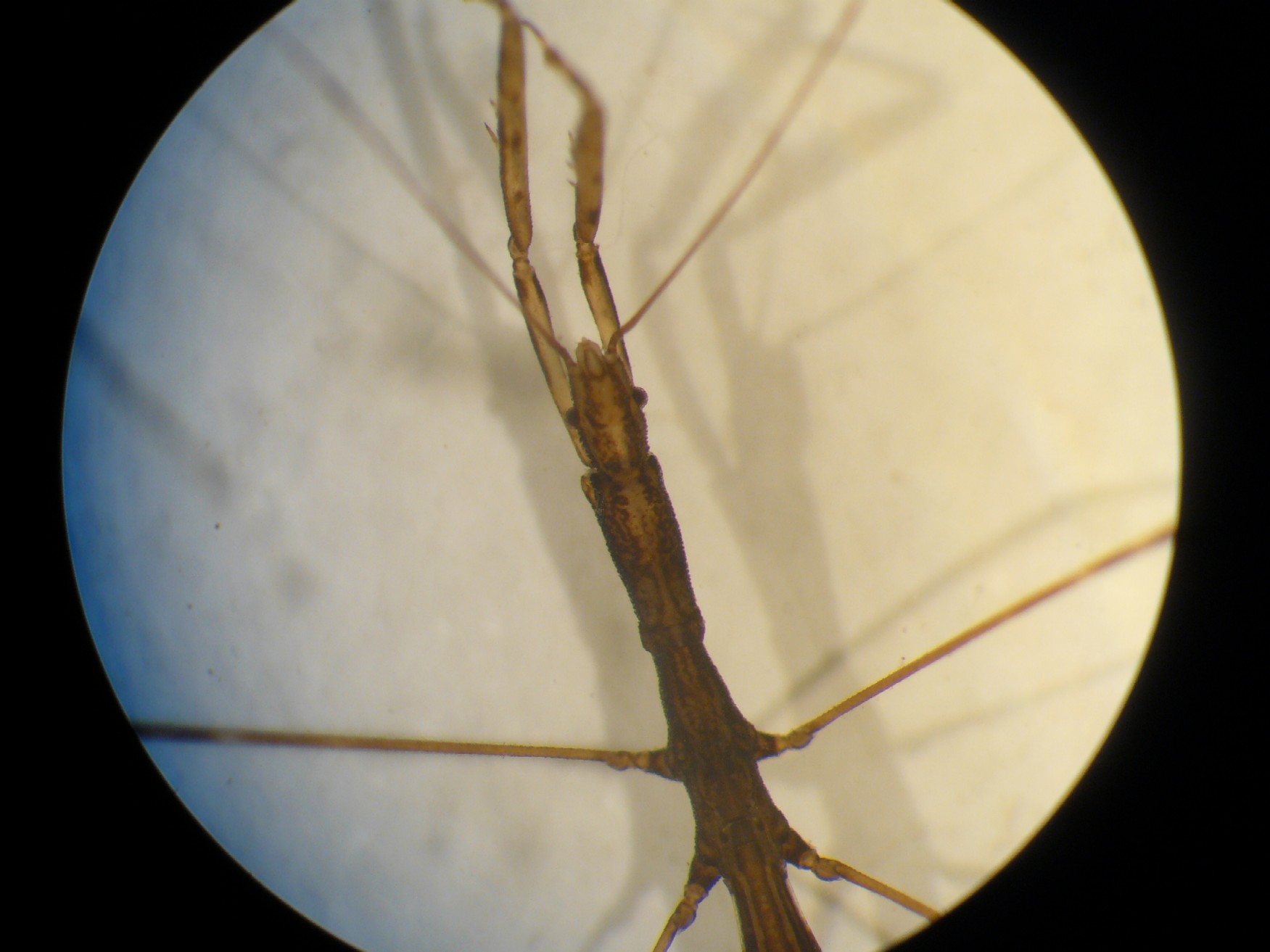
210 KB
"Knowing your planet is a step towards protecting it" -Jacques Yves Cousteau- |
Modificato da - elleelle in data 22 novembre 2011 10:01:25 |
 |
|
|
Catocala
Utente Junior
 
Città: Venezia
Regione: Veneto

99 Messaggi
Tutti i Forum |
 Inserito il - 09 marzo 2011 : 13:51:59 Inserito il - 09 marzo 2011 : 13:51:59


|
altra foto al microscopio...
Silvia
Immagine:
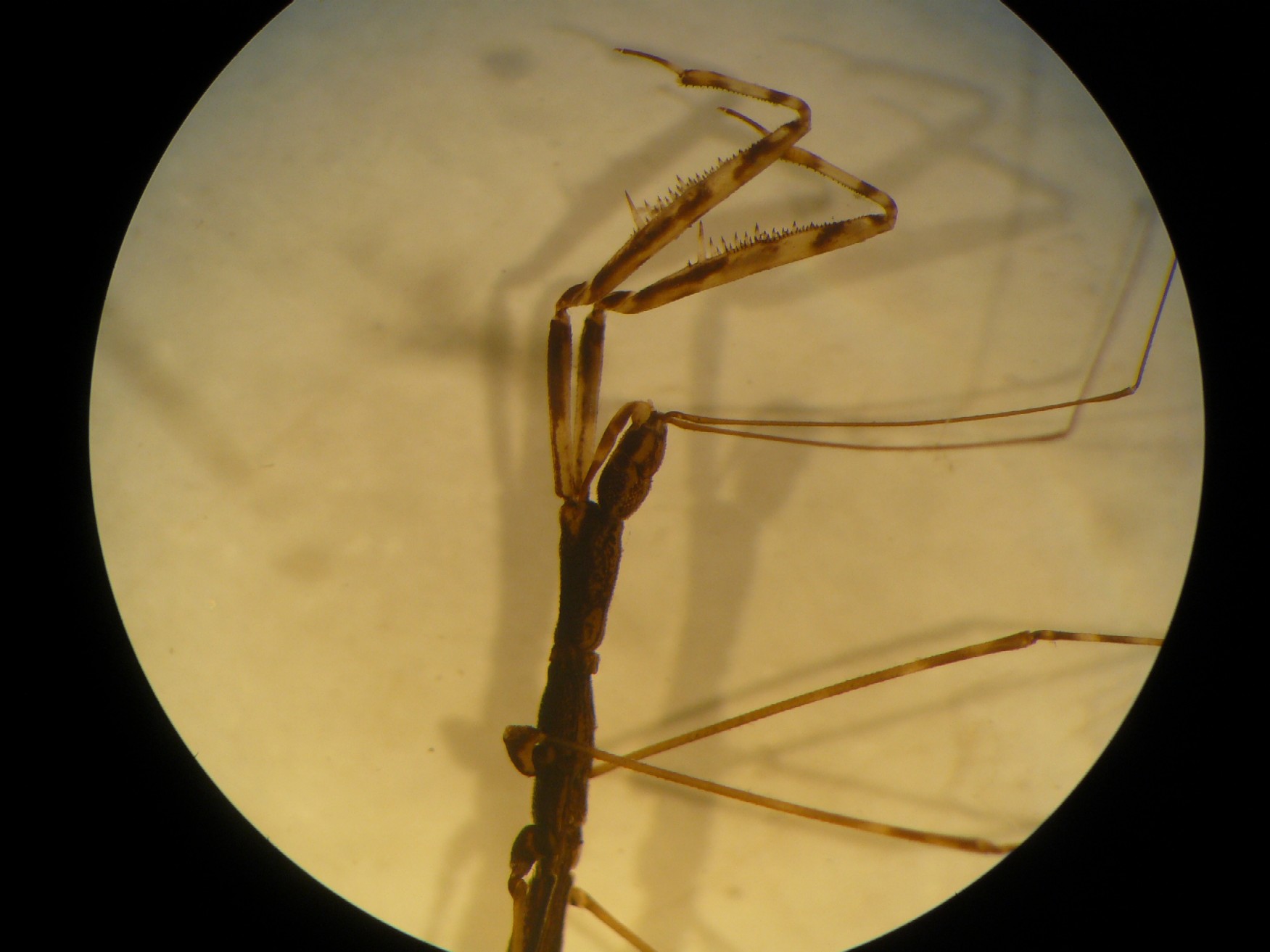
216,46 KB
"Knowing your planet is a step towards protecting it" -Jacques Yves Cousteau- |
Modificato da - Carlmor in data 12 marzo 2011 13:38:49 |
 |
|
|
Catocala
Utente Junior
 
Città: Venezia
Regione: Veneto

99 Messaggi
Tutti i Forum |
 Inserito il - 09 marzo 2011 : 13:54:20 Inserito il - 09 marzo 2011 : 13:54:20


|
altra foto
Silvia
Immagine:
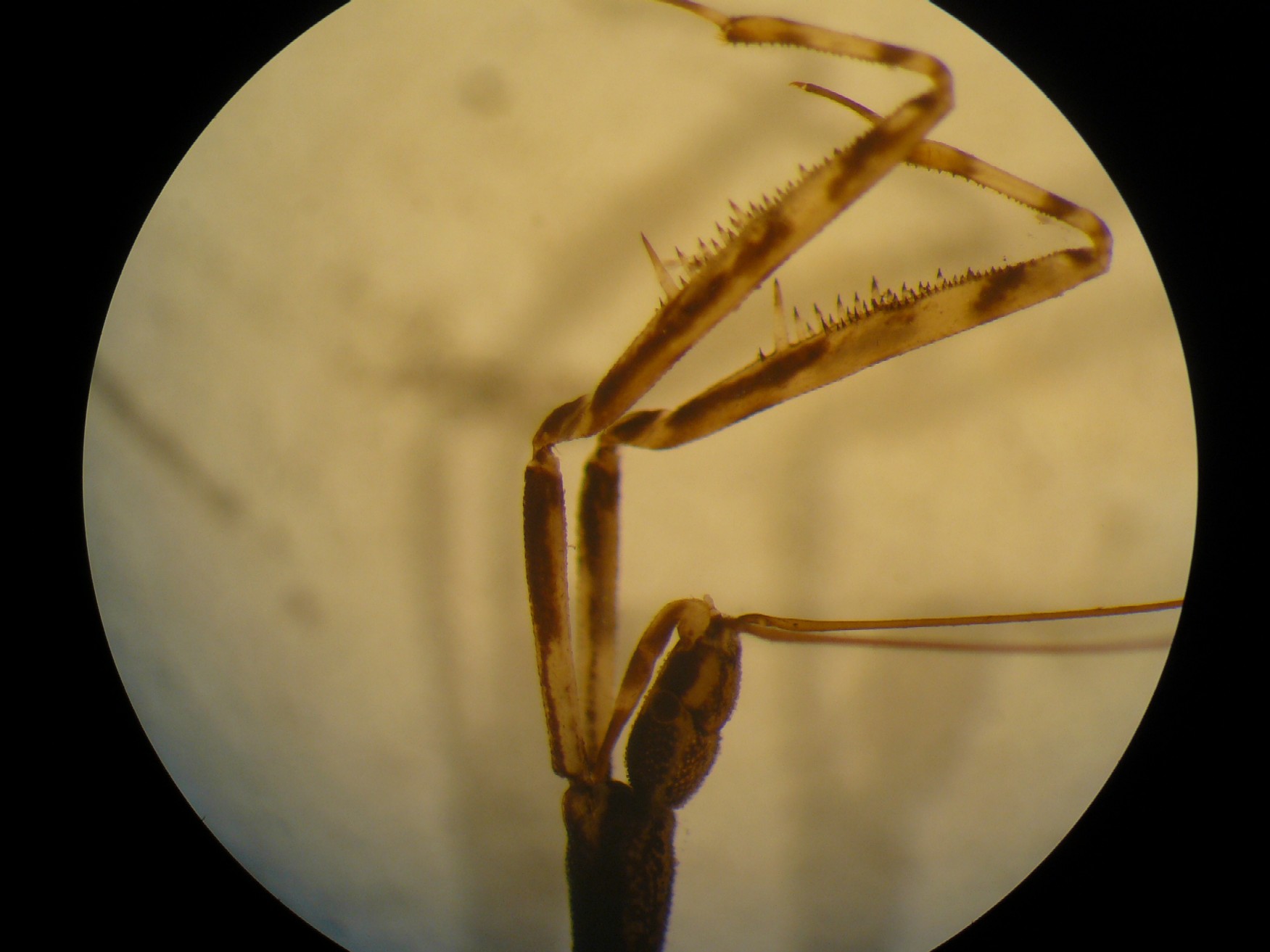
215,08 KB
"Knowing your planet is a step towards protecting it" -Jacques Yves Cousteau- |
Modificato da - elleelle in data 22 novembre 2011 10:07:50 |
 |
|
|
MOhon
Utente V.I.P.
  
Città: Valencia
Regione: Spain

246 Messaggi
Tutti i Forum |
 Inserito il - 09 marzo 2011 : 15:37:04 Inserito il - 09 marzo 2011 : 15:37:04


|
Ciao Silvia.
Sembra Metapterus sp. (Reduviidae, Emesinae, Metapterini)
Può essere Metapterus caspicus?
In Spagna ci sono solo M. Linearis 
Ciao!!
Luis Vivas
Link
----------
Experto de Heteroptera para BiodiversidadVirtual.org
Link |
Modificato da - MOhon in data 09 marzo 2011 15:38:08 |
 |
|
|
Havinthus
Utente Junior
 
Città: Leiden

25 Messaggi
Tutti i Forum |
 Inserito il - 11 marzo 2011 : 02:55:50 Inserito il - 11 marzo 2011 : 02:55:50


|
Hello, this is definitely Metapterus caspicus (Dohrn). I have found this species several times in Southern France. Frank
Immagine:

66,68 KB
Immagine:

76,12 KB | Messaggio originario di Catocala:
Buongiorno a tutti!
mi aiutereste con l'identificazione di questo emittero?
è stato trovato in una pitfall traps in una zona nel comune di Ferrara in giugno 2010.
Grazie!
Silvia
Immagine:
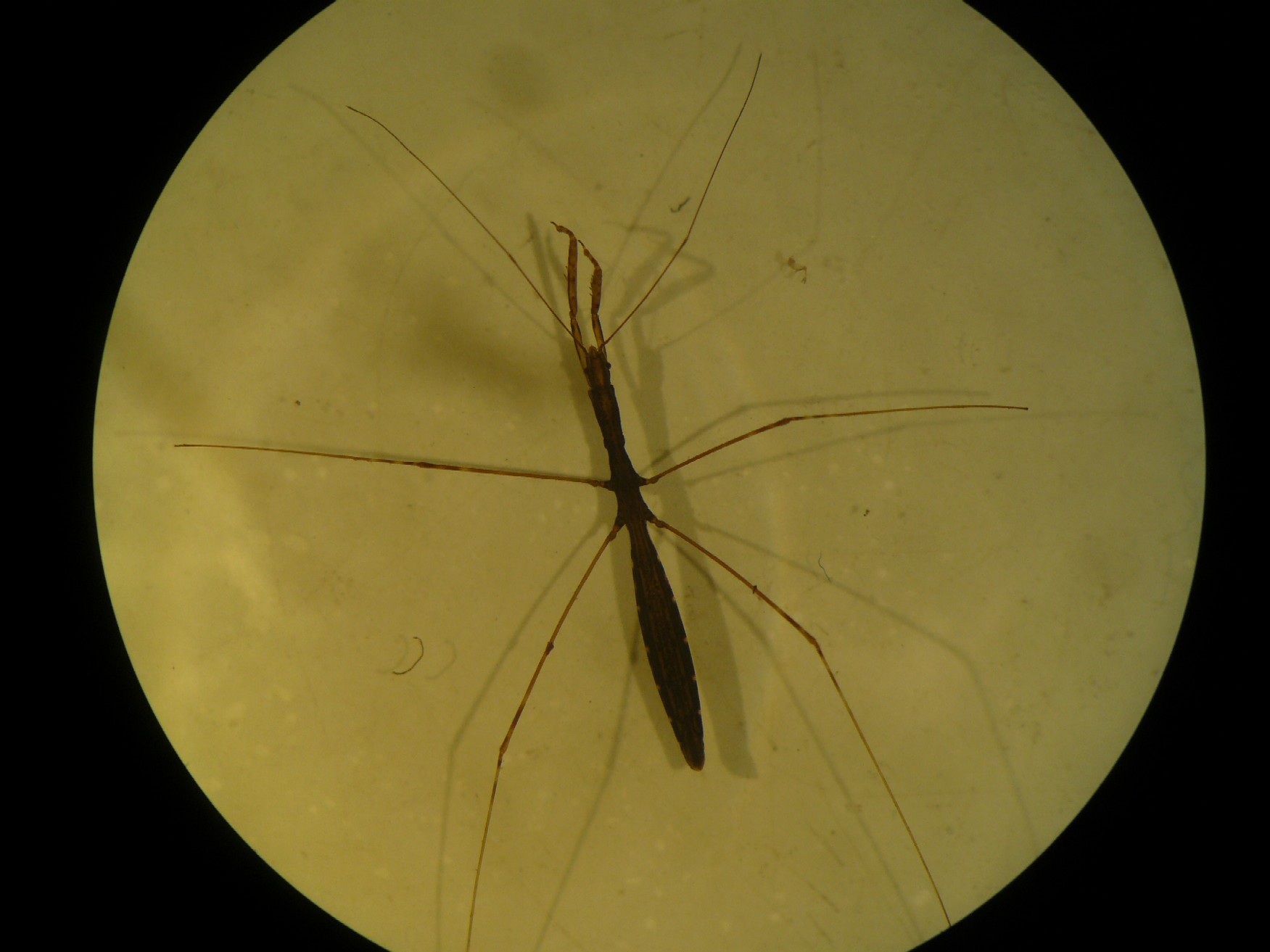
211,7 KB
"Knowing your planet is a step towards protecting it" -Jacques Yves Cousteau-
|
|
Modificato da - Paris in data 14 marzo 2011 23:42:53 |
 |
|
|
Catocala
Utente Junior
 
Città: Venezia
Regione: Veneto

99 Messaggi
Tutti i Forum |
 Inserito il - 11 marzo 2011 : 08:16:58 Inserito il - 11 marzo 2011 : 08:16:58


|
Grazie mille per l'aiuto!
Thank you very much for helping me!
Silvia
"Knowing your planet is a step towards protecting it" -Jacques Yves Cousteau- |
 |
|
|
Paris
Moderatore
    

Città: Sondrio
Prov.: Sondrio
Regione: Lombardia

5748 Messaggi
Flora e Fauna |
 Inserito il - 11 marzo 2011 : 11:47:31 Inserito il - 11 marzo 2011 : 11:47:31


|
Io purtroppo non vedo le altre foto che sono state messe in questa discussione, magari potrebbero aiutarci nella diagnosi.
In genere, M.caspicus ha l'addome più ovale, ma i caratteri che permettono una sicura separazione sono nella forma dell'ultimo tergite addominale della femmina e nmi parameri dei maschi.
Provate a confrontare con questa discussione:
Link
-----------
Link |
 |
|
|
Havinthus
Utente Junior
 
Città: Leiden

25 Messaggi
Tutti i Forum |
 Inserito il - 11 marzo 2011 : 19:23:04 Inserito il - 11 marzo 2011 : 19:23:04


Classe: Hexapoda Ordine: Hemiptera Heteroptera Famiglia: Reduviidae Genere: Metapterus Specie:Metapterus caspicus
|
Ciao,
Scusa, ma non parlo Italiano. I tried to add pictures of a male and a female Metapterus caspicus to my previous message, but it didn't work. I try it again.
Immagine:
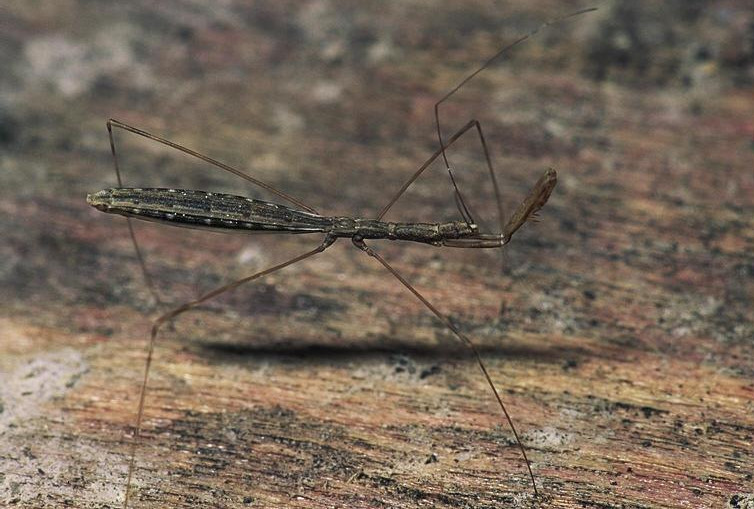
123,04 KB
Immagine:
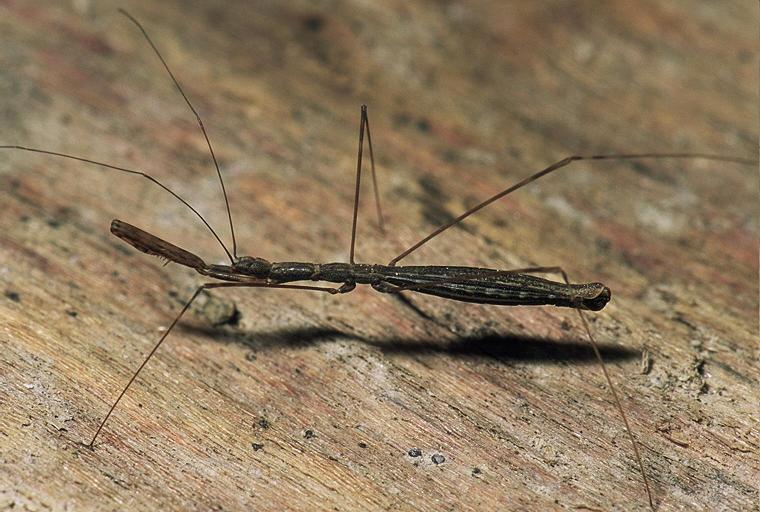
76,13 KB |
Modificato da - Paris in data 14 marzo 2011 23:53:22 |
 |
|
|
Havinthus
Utente Junior
 
Città: Leiden

25 Messaggi
Tutti i Forum |
 Inserito il - 11 marzo 2011 : 19:25:14 Inserito il - 11 marzo 2011 : 19:25:14


|
| Sorry, I forgot to tell: the first picture is the female, the second is the male. Saluti a tutti, Frank |
 |
|
|
Havinthus
Utente Junior
 
Città: Leiden

25 Messaggi
Tutti i Forum |
 Inserito il - 12 marzo 2011 : 13:16:18 Inserito il - 12 marzo 2011 : 13:16:18


Classe: Hexapoda Ordine: Hemiptera Heteroptera Famiglia: Reduviidae Genere: Ploiaria Specie:Ploiaria domestica
|
Hello fellow-bughunters,
For those of you who are interested in emesines (Reduviidae, Emesinae) I have two more pictures that I took in mediterranean France (Provence) in recent years. The first one is the fairly common Ploiaria domestica (male),
Immagine:
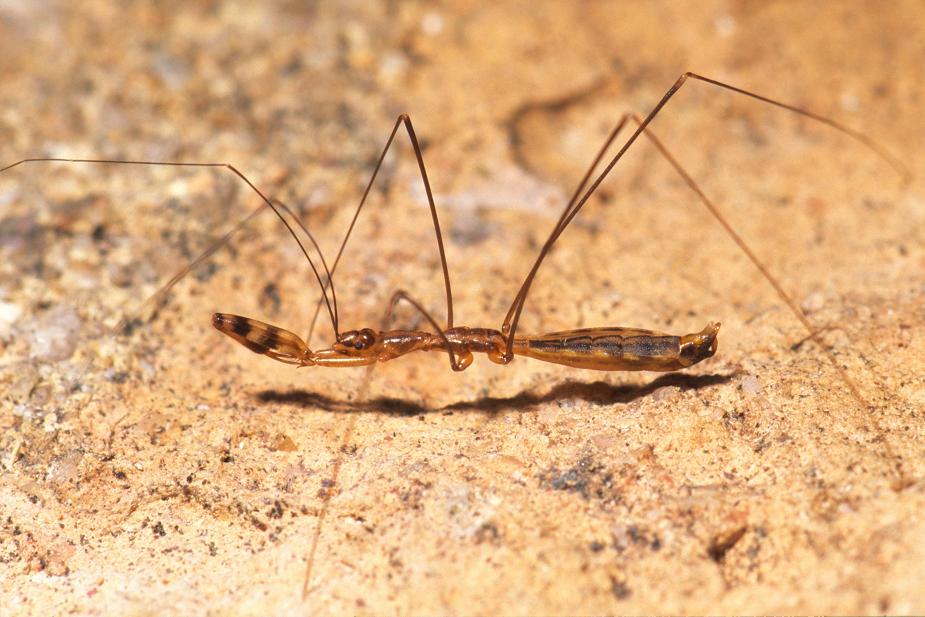
89,54 KB
|
Modificato da - Paris in data 14 marzo 2011 23:54:38 |
 |
|
|
Havinthus
Utente Junior
 
Città: Leiden

25 Messaggi
Tutti i Forum |
 Inserito il - 12 marzo 2011 : 13:16:18 Inserito il - 12 marzo 2011 : 13:16:18


Classe: Hexapoda Ordine: Hemiptera Heteroptera Famiglia: Reduviidae Genere: Stenolemus Specie:Stenolemus novaki
|
Immagine:
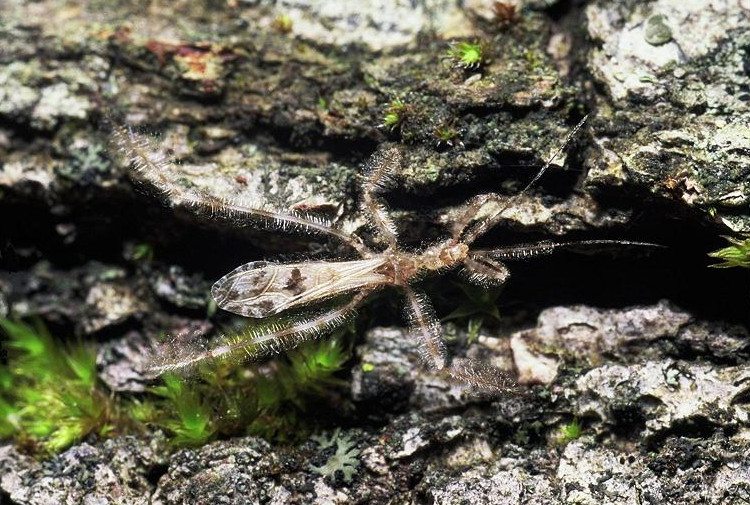
182,68 KB
the second represents Stenolemus novaki, a species that is said to be rare, but appears to be not too difficult to find, at least in southern France.
Cordiali saluti,
Frank
-----------
Link |
Modificato da - Paris in data 14 marzo 2011 23:55:22 |
 |
|
|
Carlmor
Moderatore Trasversale
    
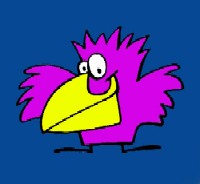
Città: Varese
Prov.: Varese
Regione: Lombardia

8940 Messaggi
Flora e Fauna |
 Inserito il - 12 marzo 2011 : 13:41:22 Inserito il - 12 marzo 2011 : 13:41:22


|
| Messaggio originario di Paris:
Io purtroppo non vedo le altre foto che sono state messe in questa discussione, magari potrebbero aiutarci nella diagnosi.
In genere, M.caspicus ha l'addome più ovale, ma i caratteri che permettono una sicura separazione sono nella forma dell'ultimo tergite addominale della femmina e nmi parameri dei maschi.
...
|
Il problema sono le parentesi nel nome del file. Le immagini che vengono uploadate sul forum non devono contenere nel nome caratteri speciali come ()" ecc. Ho provveduto a correggere il problema 
Carlo
|
 |
|
|
Juventino
Utente Super
    
Città: Nizza
Regione: France

10135 Messaggi
Tutti i Forum |
 Inserito il - 12 marzo 2011 : 14:44:32 Inserito il - 12 marzo 2011 : 14:44:32


|
Thanks a lot!!
Link
L’école buissonnière |
 |
|
|
Catocala
Utente Junior
 
Città: Venezia
Regione: Veneto

99 Messaggi
Tutti i Forum |
 Inserito il - 14 marzo 2011 : 22:51:33 Inserito il - 14 marzo 2011 : 22:51:33


|
Good pictures!! thank you very much!!
Scusatemi per le foto... non sapevo delle parentesi ... ...
Buona serata a tutti,
Silvia
"Knowing your planet is a step towards protecting it" -Jacques Yves Cousteau- |
 |
|
|
Paris
Moderatore
    

Città: Sondrio
Prov.: Sondrio
Regione: Lombardia

5748 Messaggi
Flora e Fauna |
 Inserito il - 15 marzo 2011 : 00:01:21 Inserito il - 15 marzo 2011 : 00:01:21


|
I confirm all. Thank You very much for this contribution to the knowledge of Mediterranean Fauna of Emesinae.
In this table we can see diferences between genus Metapterus, Schidium and Ischnonyctes. Look at the shape of the front of M.caspicus and M. linearis:
Chiave dicotomica delle specie euro-mediterranee dei generi Schidium, Ischnonyctes e Metapterus (tribù: Metapterini)
1. Margini del lobo posterore del capo fortemente e progressivamente ristretti all'indietro. Fronte senza spine nè protuberanze. Corpo, anche nella parte anteriore liscio e al più, ricoperto di piccole squame chiare o argentee. Ottavo tergite della femmina fogliare, con tre punte.................................................................................................. 2
- Margini del lobo posteriore del capo subparalleli, fronte con delle punte o protuberanze visibili, parti anteriori del corpo superiormente granulose. Ottavo tergite della femmina triangolare o trapezoidale, senza punte ........................................................... 3
2. Ottavo sternite della femmina come in fig.3 ............... Schidium tibbu Villiers, 1960 (Tibesti, Africa sett.?)
- Ottavo sternite della femmina come in fig. 4 ............... Schidium palinuri Dioli, 1989 (Italia meridionale, Spagna meridionale)
3. Fronte (tylus), vista di lato, con una punta centrale molto prominente, diritta o un po' ricurva, presente anche nella ninfa. Una spina più piccola anche alla base della fronte .................................................. Ischnonyctes barbarus (Lucas, 1849)(Mediterraneo)
- Fronte senza punta prominente, è presente invece la spina meno pronunciata ma solo alla base della fronte .................................................................................. 4
4. Spina alla base della fronte poco sporgente e quasi impercettibile, ottavo tergite della femmina a forma di trapezio ......................... Metapterus caspicus (Dohrn, 1863) (Europa orientale, a occidente, sino all'Italia N-E)
- Spina alla base della fronte molto sporgente e appuntita, ottavo tergite della femmina triangolare, a punta arrotondata ............. Metapterus linears Costa, 1863 (Mediterraneo occidentale)
Fig. 1 e 2: capo della ninfa e dell'adulto di Ischnonyctes barbarus
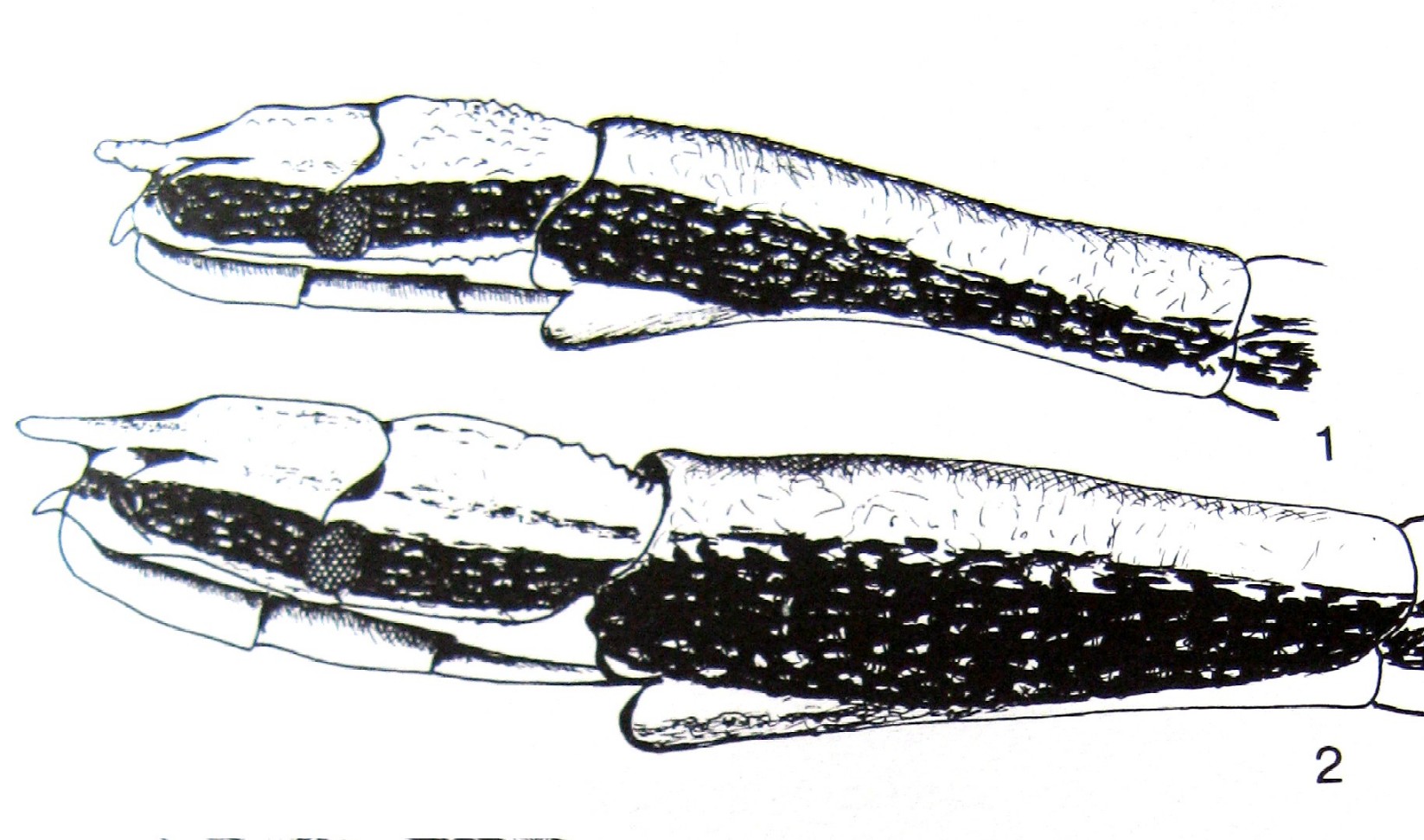
Fig. 5-7: Schidium palinuri. Fig. 8-10: Metapterus caspicus.
Fig. 11-13: Metapterus linearis. Fig. 6-9-12: ottavo tergite della femmina;
Fig. 7-10-13: paramero del maschio.
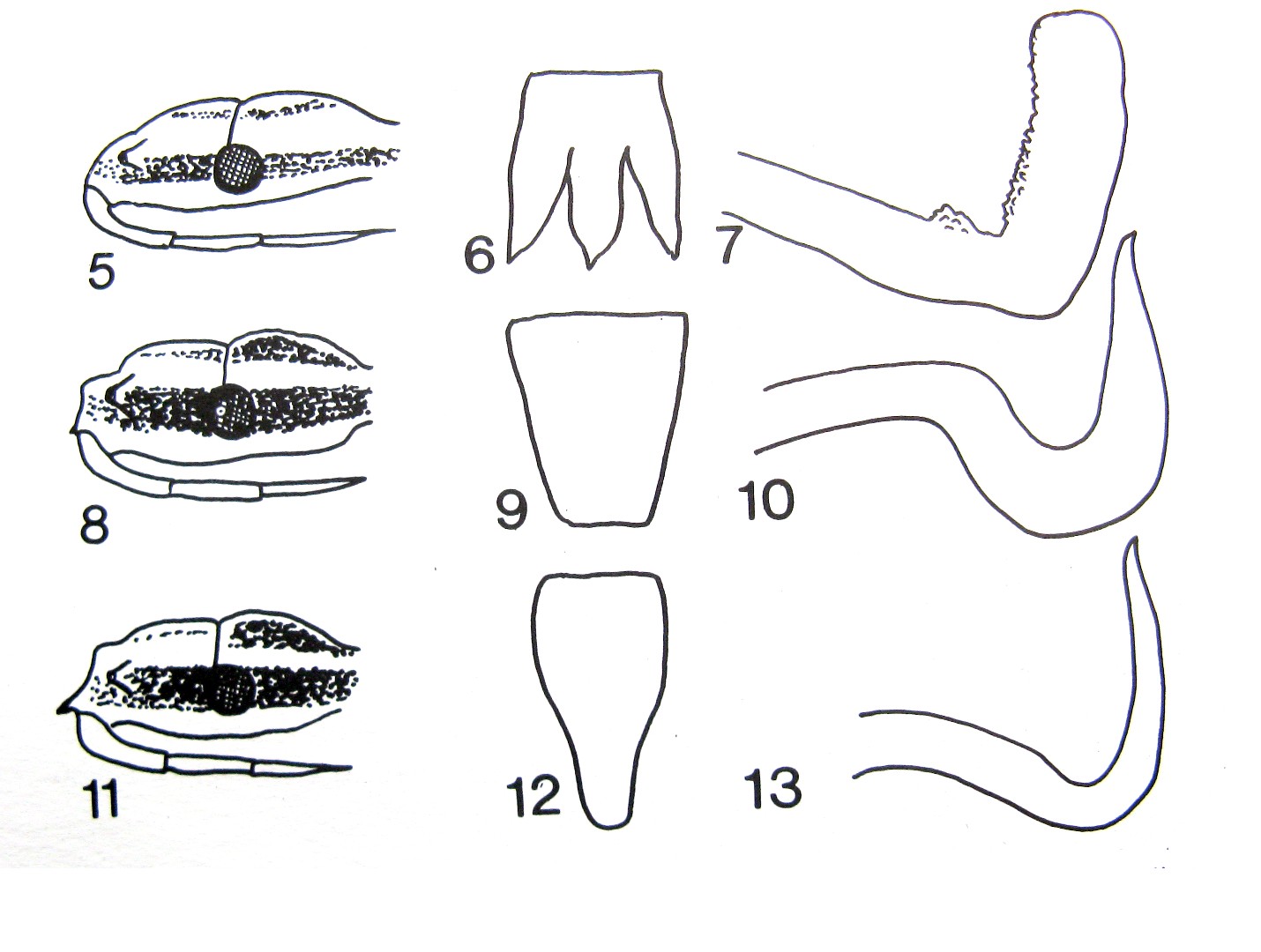
-----------
Link |
 |
|
|
Havinthus
Utente Junior
 
Città: Leiden

25 Messaggi
Tutti i Forum |
 Inserito il - 23 marzo 2011 : 19:28:27 Inserito il - 23 marzo 2011 : 19:28:27


|
Thank you very much for your appreciation.
I will add more pictures of mediterranean Reduviidae to the forum soon. I have been photographing Heteroptera and other insects for 25 years now, but more than 90% of these pictures are not digitalized yet.
Frank |
 |
|
|
Havinthus
Utente Junior
 
Città: Leiden

25 Messaggi
Tutti i Forum |
 Inserito il - 02 gennaio 2013 : 14:07:33 Inserito il - 02 gennaio 2013 : 14:07:33


|
Update for Stenolemus novaki findings in 2012:
1 female thick with eggs under dead grasses on sunny hillslope near Peyrejaume (Drôme, France), altitude 505m, on 23/05/2012.
Buon Anno a Tutti!
Frank Vinkestijn |
|
 |
|
|
Paris
Moderatore
    

Città: Sondrio
Prov.: Sondrio
Regione: Lombardia

5748 Messaggi
Flora e Fauna |
 Inserito il - 05 gennaio 2013 : 01:58:18 Inserito il - 05 gennaio 2013 : 01:58:18


|
Many Thanks!! |
PAGINA RESEARCHGATE
E PUBBLICAZIONI PDF - Link |
 |
|
| |
 Discussione Discussione  |
|

 Forum
|
Registrati
|
Msg attivi
|
Msg Recenti
|
Msg Pvt
|
Utenti
|
Galleria |
Map |
Forum
|
Registrati
|
Msg attivi
|
Msg Recenti
|
Msg Pvt
|
Utenti
|
Galleria |
Map |